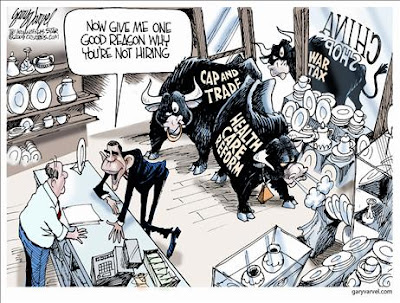Is America a
Force for Good in the World?
By Justin Raimondo
With the “liberation” of Libya from the grip of Muammar Gadhafi, progressives like E. J. Dionne and other cheerleaders for this administration are hailing the joint US-NATO
operation as a new model for American intervention – an exemplar of the “good”
way to push our weight around on the international stage, as opposed to the “bad” way pursued by George W. Bush and the neoconservatives in
Iraq. As Glenn Greenwald points out, the same triumphalist message being trumpeted by
this administration’s supporters over Libya was uncritically broadcast by the “mainstream” media in the wake of “mission
accomplished” in Iraq.
That reality
will soon intrude, and correct this “irrational exuberance” – as a certain Federal Reserve chairman would put it – is an absolute certainty. Indeed, a few
skeptical voices are already being raised, notably Patrick Cockburn, reporting from Benghazi:
“Any black
African in Libya is open to summary arrest unless he can prove that he was not
a member of Colonel Gadhafi’s forces… The rebels claim that many of Colonel
Gadhafi’s soldiers were black African mercenaries. Amnesty International says
these allegations are largely unproven and, from the beginning of the conflict,
many of those arrested or, in some cases, executed by the rebels were
undocumented laborers caught in the wrong place at the wrong time.
“But there
is no doubt that all black Africans are now under suspicion. The head of the
militia in Faraj, a short bearded man in a brown robe named Issam, explained
how well-prepared local insurgents had taken over the area on 19 August,
telling Colonel Gadhafi’s supporters to hand over their weapons and stay at
home. There was almost no resistance from the demoralized regime and few people
had been arrested. Then Issam added, as an aside, that his men had also
detained ‘tens of Africans whom we sent off to prison.’ He did not explain why
they had been jailed.”
Across
“liberated” Libya, black Africans are being rounded up by the rebel forces, and
often either summarily executed or else imprisoned. See here, here, and here for more disgusting evidence of the rebels’
anti-black campaign.
Gadhafi reportedly hired African mercenaries to fight for his regime, and
this is the ostensible reason why the rebels are rounding up blacks, but this
explanation seems more like an excuse than an actual reason in view of the fact
that there have been periodic anti-black riots in the country, notably in 2000.
The idea
that American imperialism could be a force for “good,” with a “progressive” president holding the reins, was
never very convincing. But even I never expected to be confronted with the
ultimate irony: the first African-American President appears to be responsible,
in part, for a large scale anti-black pogrom. This is
his signal foreign policy “accomplishment” – a mass lynching.
One could
argue, however, that this is not the fault of the Obama administration, since
it was their Libyan proxies, and not US troops, who committed that particular
atrocity. We can still see the US as a force for “good” in the world, albeit
not without morally complex anomalies to factor into the equation. Well, tell
that to the people of Ishaqi, a village in Iraq, where US troops recently
conducted a raid:
“Witnesses
in the village of Ishaqi, just south of Tikrit, said Iraqi and American forces
opened fire on civilians and threw grenades early Friday as they conducted the
raid. The villagers said the forces were responding to gunfire from people in
the village and then fired back, killing a 13-year-old boy and an
off-duty police officer.”
The American
authorities are currently stonewalling, denying any responsibility for the
deaths, and claiming it was an Iraqi operation – although they admit US forces
entered the scene when “fighting broke out.” One has to wonder, however, how a
13-year-old boy and a police officer came to be the targets – are these the “terrorists”
we’re supposedly fighting in Iraq, whose presence requires an extended American stay?
It’s an
irony that this latest incident – which has further complicated Washington’s
efforts to persuade the Iraqis they need our continued presence – took place in
Ishaqi, the scene of yet another infamous US atrocity in 2006. As Antiwar.com’s
John Glaser was the first to report earlier this week:
“As revealed
by a
State Department diplomatic cable released by WikiLeaks last week, US forces committed a heinous war
crime during a house raid in Iraq in 2006, wherein one man, four women, two
children, and three infants were summarily executed. The cable excerpts a
letter written by Philip Alston, Special Rapporteur on Extrajudicial, Summary,
or Arbitrary Executions, addressed to then Secretary of State Condoleezza
Rice. American troops approached the home of Faiz Harrat Al-Majma’ee,
a farmer living in central Iraq, to conduct a house raid in search of
insurgents in March of 2006.









